In this article, we’ll tell you everything you need to know about learning how to scuba dive in Koh Tao. We’ve included all the details to help you pick a scuba dive shop in Koh Tao, the lessons we’ve learned and everything else about diving on this Thai island.
Adding to our repertoire of experiences ranks very high up on our list of things to do in life.
Carine has told me a million times that she wants to scuba dive. Since meeting the love of my life, there aren’t many things that I’m not open to trying, but I must say scuba diving brought about a certain fear in me.
But now that we did it, we want to share this joy with everyone. That’s why we created your ultimate guide to scuba diving in Koh Tao.
This article may contain affiliate/compensated links. For more information, please see our disclaimer here. We take all the efforts necessary to ensure the information included in this post is accurate, correct and current, sometimes, things just change! Travel information like opening hours, business operations and prices may change. If you find anything in this post that is incorrect or outdated, please let me know in the comments so I can update it for other readers. Cheers!
We love helping you plan amazing trips. If you need any of these services, consider booking them through our affiliate links. Without costing you anything extra, you will be helping support us so we can continue to write these blogs for you.
We thank you again for your continued support.
🏠 Find the perfect place to stay with Booking.com
✈️ Get the cheapest flights with Skyscanner
🚣 Book your favorite activities with Viator
💻 Make sure you have everything you need for your epic trip by checking our store on Amazon
Table of Contents
What was holding us back from scuba diving
For one, I was deathly afraid of sharks.
Even if I’d had no interactions with one (up until snorkeling on the Great Barrier Reef a few months prior). This fear can be attributed to movies like Jaws, that sensationalize shark attacks.
In reality, you are more likely to live to 100 years old or be hit by an asteroid, than you are to be attacked by a shark.
2025 update – Now that we have over 100+ dives under our belt, we love seeing sharks underwater. In fact, the ocean and its beauty have come to inspire us on so many different levels.

The next reason that I was sort of afraid of scuba diving is because of the unknown of the ocean. It’s so vast, with so many creatures that are bigger than us, and that we are just not used to seeing.
I knew that both these fears were unfounded, so wanting to fulfill Carine’s wishes, I said let’s do it.
Why we wanted to scuba dive in Koh Tao, Thailand
One of the reasons that Carine had always wanted to scuba dive was to see a whale shark!
For those of you who don’t know, whale sharks are the biggest fish in the ocean. Also, their name is confusing, are they whales or sharks?
Well, they’re definitely sharks. Add to that the fact that they are vegetarians (friendly giants as Carine likes to say) and it’s no wonder why she’s in love with them!
They can measure up to 12 meters long, and weigh up to 21.5 tons. Think about that for a minute. Is your mind blown yet?
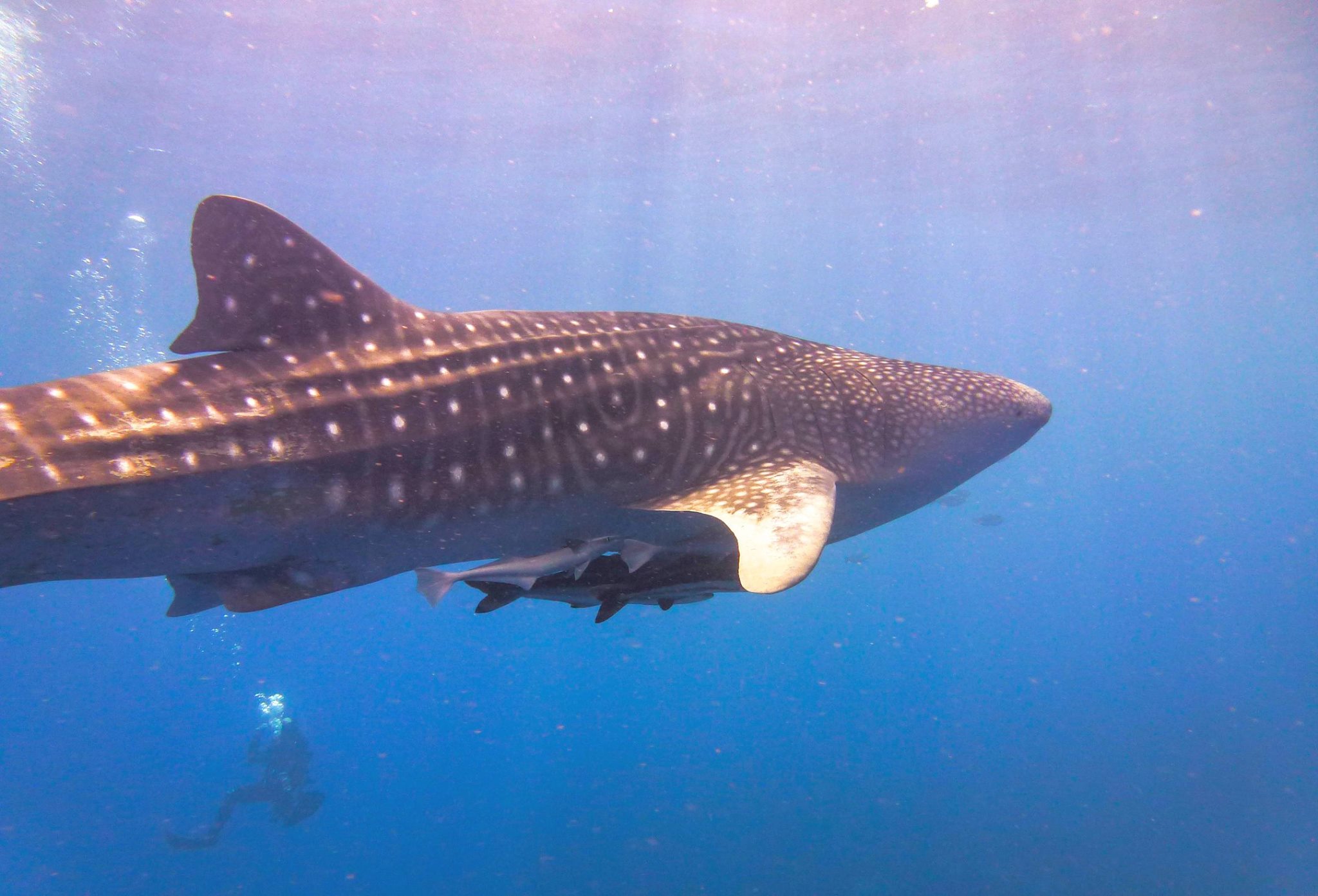
She did a lot of research, and I mean a lot (did you know that she is the research queen?). So after looking into where the best place to get our scuba diving certification was, she found out that a little island off of the Eastern coast of Thailand, called Koh Tao, was renowned as being one of the best places in the world.
Why you should learn scuba diving in Koh Tao, Thailand
It’s not hard to decide whether to learn scuba diving in Koh Tao, whether you’re a backpacker or not, on a tight budget or not.
Not only is Koh Tao a beautiful island that has plenty of marine biodiversity – both in sea creatures and coral. It’s also one of the cheapest places in the world to get your open-water certification. And there are a ton of schools that offer to teach you scuba diving in so many different languages.
So Carine looked into which of the 100+ diving schools we should sign up with. Again, after much research, we decided to go with one of the best-reviewed places on the island, Roctopus.
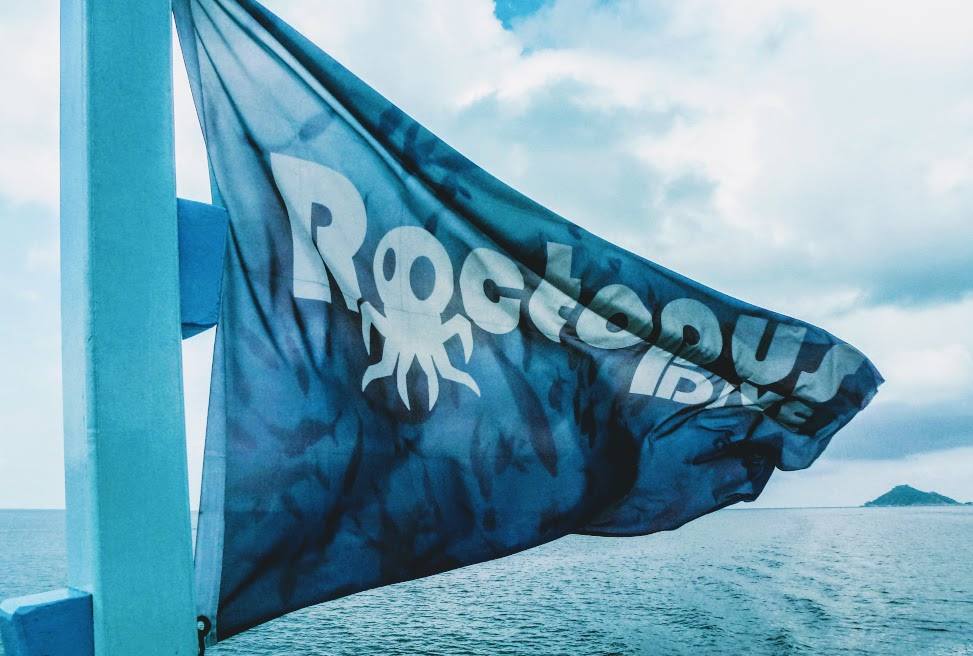
Another thing that Koh Tao is known for, is having whale sharks nearby. But these creatures are not known to be easy to spot. To give you an idea, some instructors have dived off Koh Tao over a thousand times and have not spotted one.
If you’re looking for an alternative dive site in Thailand that is free from crowds, Koh Mook in Trang Province is a great place to go! It offers amazing dive spots nearby as well.
The best time to go scuba diving in Koh Tao, Thailand
Most of the waters around the island are quite calm, with minimal current, making it the perfect place to learn to scuba dive. Although the water here is always warm (between 28-29 degrees Celcius), the best time to go diving is from March to September.
Just know that July and August are the busiest time of the year, so crowds are to be expected. While monsoons will reduce visibility in October and November, the rainy season from November to February will also make diving less enjoyable. As for the fish you can hope to see, September is the best time to see big pelagic, like whale sharks.
10 things to look for in a school to learn scuba diving in Koh Tao, Thailand
When looking for diving schools, there are a few things to look out for in general. However, in Koh Tao, with so many schools to choose from, this advice is even handier!
1. Check out the scuba diving school’s reviews on Tripadvisor
Generally, Tripadvisor is a great resource to see what others have to say about a certain school. Make sure you check the positive and negative reviews.
See what people are happy with or complaining about, but also check that these things matter to you. Don’t discard a school because of a few bad reviews.
Also, make sure you check when these reviews were written as some may no longer be valid.
2. Find out what the class sizes are
Class sizes vary from one school to the next. Same for the group size when they go for fun dives. Some schools limit the groups to one instructor for four students, while others accept to go with six or more students.
We prefer having the attention of the instructor, especially when learning a new skill, but this is different for each person. See what you’re comfortable with, but usually, larger groups are usually harder to manage.
And don’t forget, if you’re just learning how to scuba dive, the class will go at the speed of the slowest student.
3. Does the scuba diving instructors speak your language?
Sure, mostly everyone will have courses in English, but if you’re first language is not, you may want to find a school that has instructors that are fully fluent in your language.
Ideally, you find an instructor who has the same mother tongue as you so there are no miscommunication mistakes. Though underwater, we all speak the same scuba language.
4. How qualified are the instructors?
Some people look for new instructors as they want to get the most up-to-date information, while others prefer to have a seasoned instructor. This depends on you and your level of comfort
5. Meet your instructor
There is no question about it that getting to meet your instructor will be the most informative for you.
You’ll get a sense of their personality and if it matches yours. You’ll get to see if you get along with them, and if you want to spend the next few days hanging out and learning with them.
6. What’s the size of the boat?
If you tend to get seasick, choose a school that has a larger boat where you are least likely to feel the waves. If not, you might have to suck it up and deal with it. Anyway, the fish always love free food!
7. What’s your budget?
Although learning to scuba dive is not a cheap sport, Koh Tao is one of the cheapest places to learn (along with Honduras). The schools here all cost pretty much the same thing. Even if you’re on a massive budget, don’t go with the cheapest option.
Your open water course will set you back about $360 USD, 10 fun dives cost $260, while your advanced course will be about $330.
If you know you want to learn scuba diving in Koh Tao, Thailand, make sure you keep this money aside, so you don’t cheap out when the time comes to learn.
8. Check out their scuba diving equipment and gear
Usually, scuba diving schools in Koh Tao are good at keeping up with regulations, so you should be good but it’s always good to check! Derek is a giant, so we needed to make sure the school had gear in his size.
We also checked the last time their gear was checked and how often they get it cleaned and inspected.
9. Find out what time the boats leave
Every school has a different call time for the boats to leave. Most schools try to avoid having crowds around, so they’ll leave super early.
We’re not early birds, so we really appreciated the more laid-back call times at Roctopus… except when we left for Sail Rock… but more on that later!
10. What sites will your school take you to?
There are a few special sites where scuba diving in Koh Tao, Thailand is beyond extraordinary! Make sure your school will be taking you to one of them.
Those sites include Chumphon, the wreck of the Sattakut (although, this is for more advanced divers), Twins, Shark Island, Sail Rock, White Rock and Green Rock.
Extra tip for picking a scuba diving school in Koh Tao
If you are having trouble choosing between schools, I would recommend narrowing your list to 3-5 schools. Then, visit each one and check out their vibe and gear. That’s often the most important thing, for us at least.
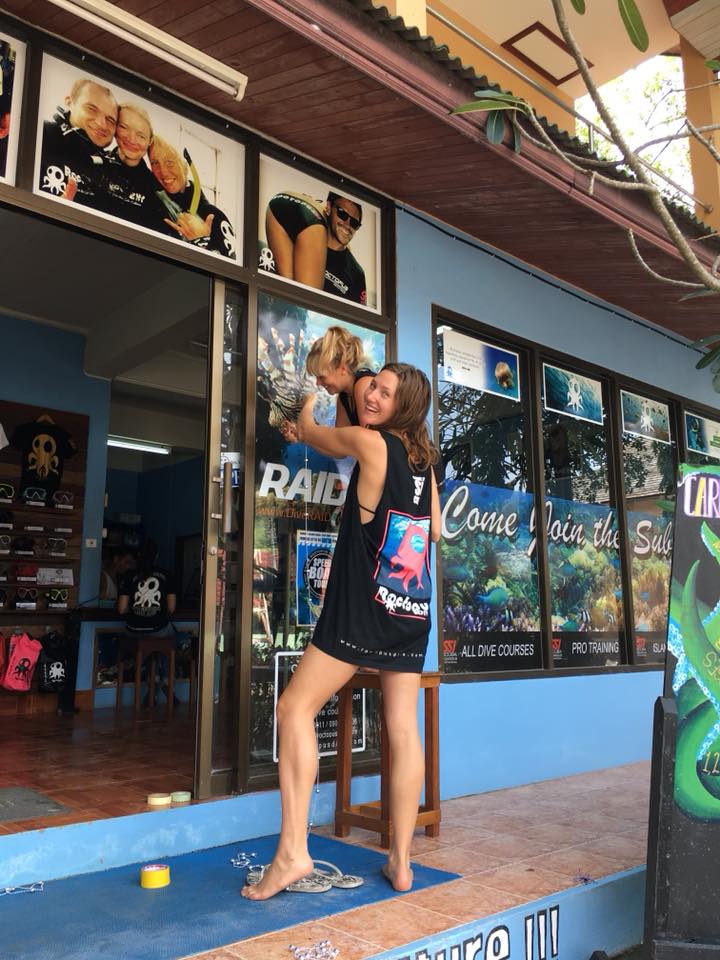
Apart from the thousands of 5-star reviews on Tripadvisor, the communication with Roctopus before booking our course was excellent.
They really weren’t pushy, even if we were ready to book with them online before we got there. They told us to just come to the dive shop when we get to the island, and if we were comfortable with what we saw, we could sign up then. Talk about confidence in their business!
So we booked our ferry tickets to Koh Tao from Phuket with the idea of staying for about 5 nights. Roctopus was also great in guiding us in choosing which accommodations to book.
We got to Koh Tao and checked ourselves in pretty late at night, and the first thing the next morning, we were at Roctopus to see what the deal was.
We were shown their facilities by one of their very friendly managers. He showed us the pool that we would be learning in, showed us all of the equipment that we would be using and how well it was cleaned and maintained (a very important aspect of choosing where to dive).
It wasn’t long before we were officially signing up. We had the rest of the day to hype ourselves up because the next day was going to be our first day of orientation.
The course structure for learning scuba diving in Koh Tao
So the big day arrived, and after a lazy morning, we strolled into Roctopus to meet our team. First, we met John, a British chap who has been living in Koh Tao as a dive instructor for about 2 years.
If you like direct, no-nonsense and a dry sense of humor, John is your guy! He is also pretty fun to hang around, but don’t tell him I said so!
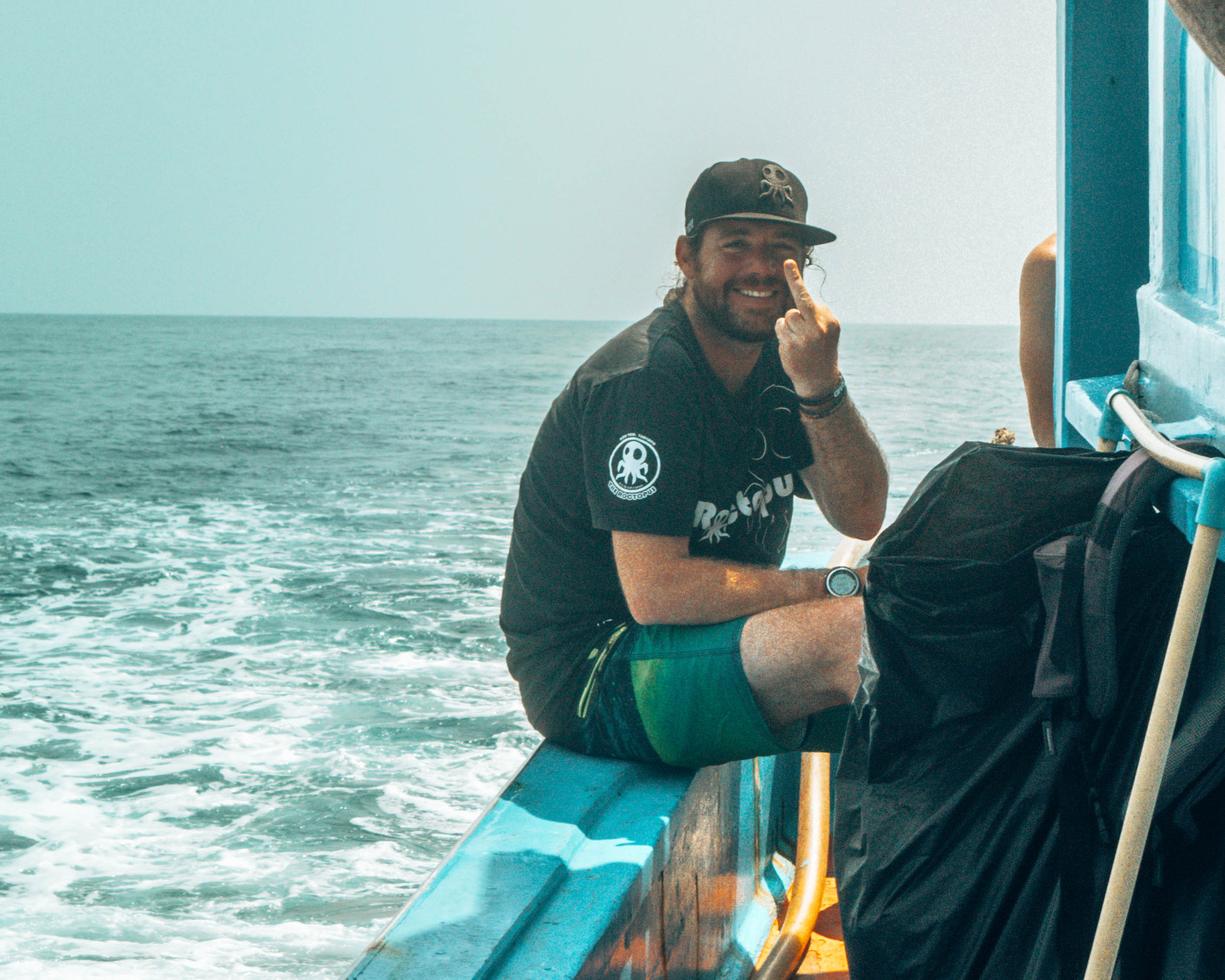
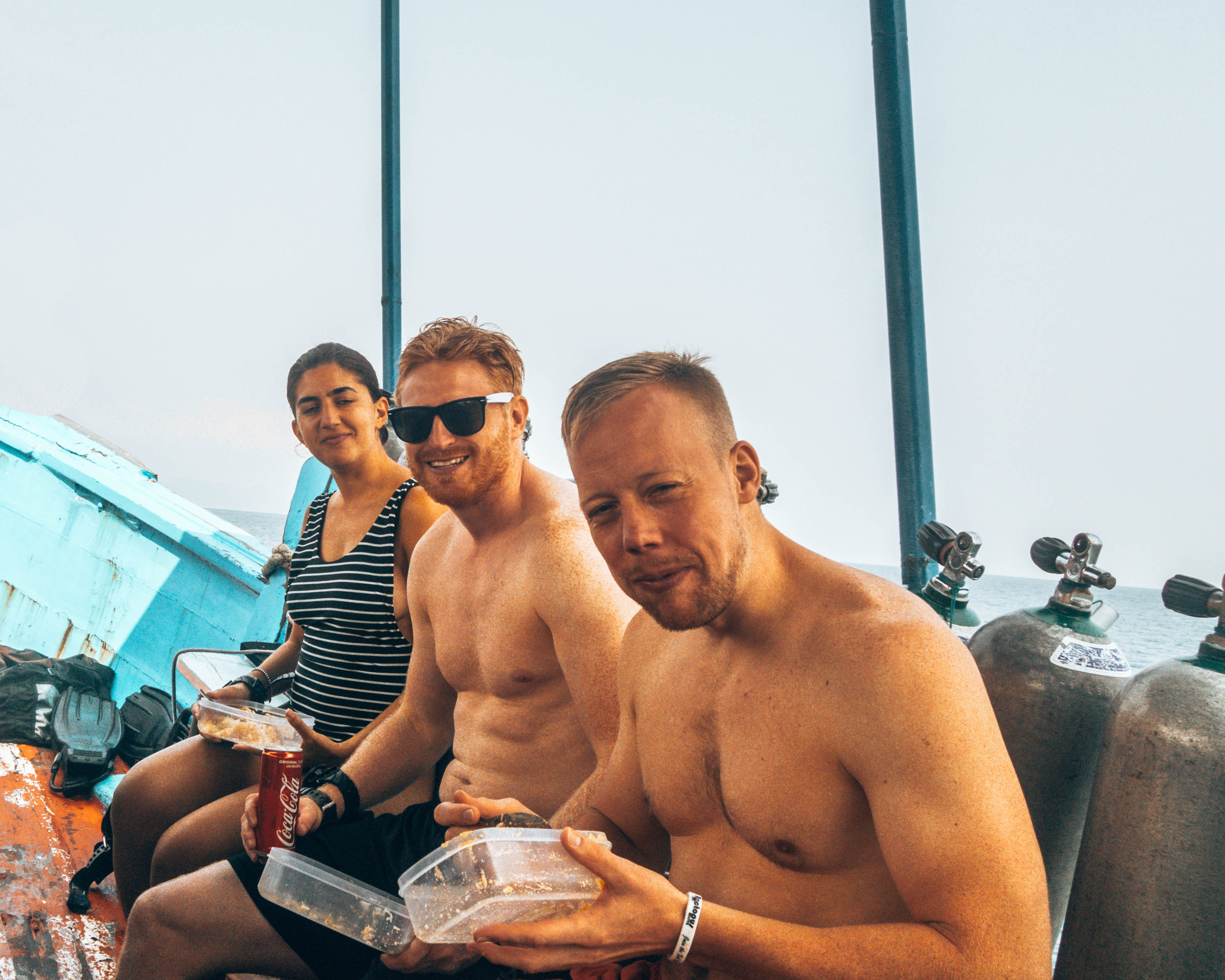
Then we met the other two people who would be doing their certification with us, Carl and Ernst, two Swedish firefighters vacationing in Thailand for a few weeks.
The first afternoon was spent going over the practical side of diving. We were in a small classroom while John walked us through some of the course material we would need in order to pass the practical exam. A few hours of this and then it was to the bar with our team and John to get to know each other a little.
We really hit it off with John, Carl, and Ernst, but more on that later. That night, John tells us that we would have some homework for the next day. I LOVE homework… Can you sense the sarcasm here? At least this time it is stuff that interests me, so it wasn’t so tedious.
The next morning we get back to the classroom and discuss our homework, pass some more tests, and then finally we get suited up for the pool.
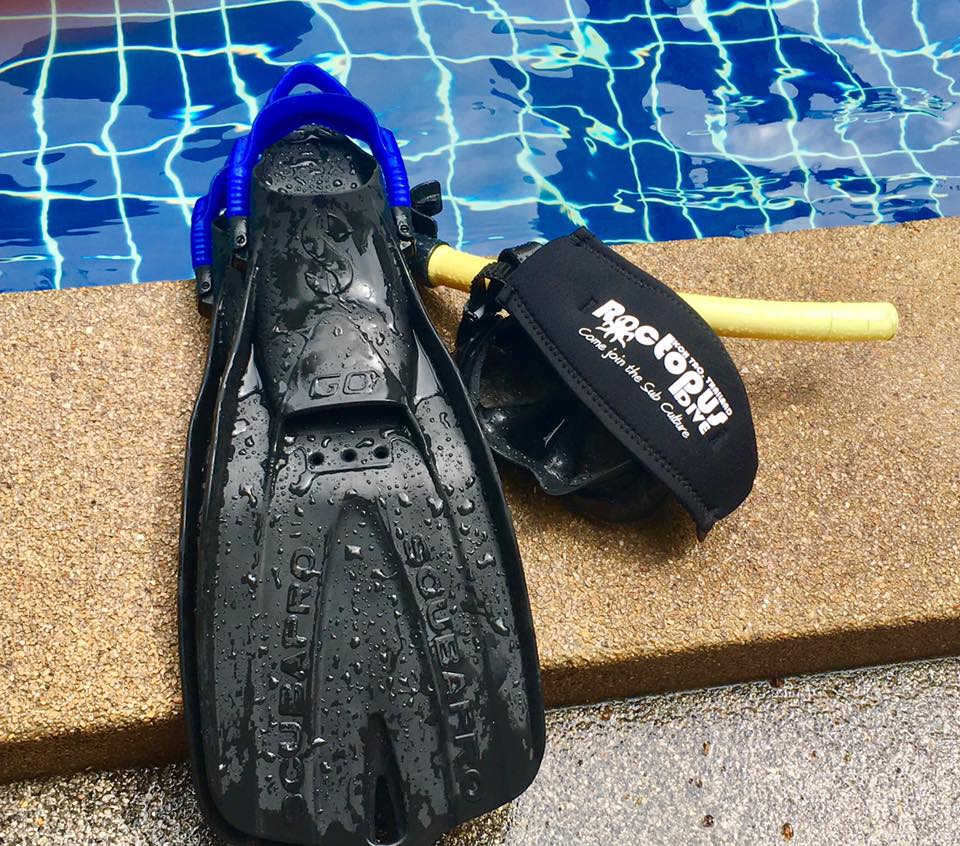
What we learned during our scuba diving lessons in Koh Tao
John showed us everything from getting the wetsuit on, to putting together all the gear. Then we get into the water, and the first thing that he teaches us is how to breathe through the regulator (fancy/technical word for what you breathe through). This was the first thing that really made me realize how different scuba diving would be.
When you’re diving, the way that you breathe is so different than what we are used to. Without getting into too many specifics, the main difference is how much you are trying to conserve your breath.
The reason for this is to use less oxygen, so you can dive for a longer time. So the trick is to breathe in little breaths and breathe out for as long as you can. It’s quite unnatural at first.
It’s pretty freaky when you go underwater for the first time and start breathing through the regulator. You stay below the surface of the water for so long, it was just the nuts, and we are only in the pool at this point!
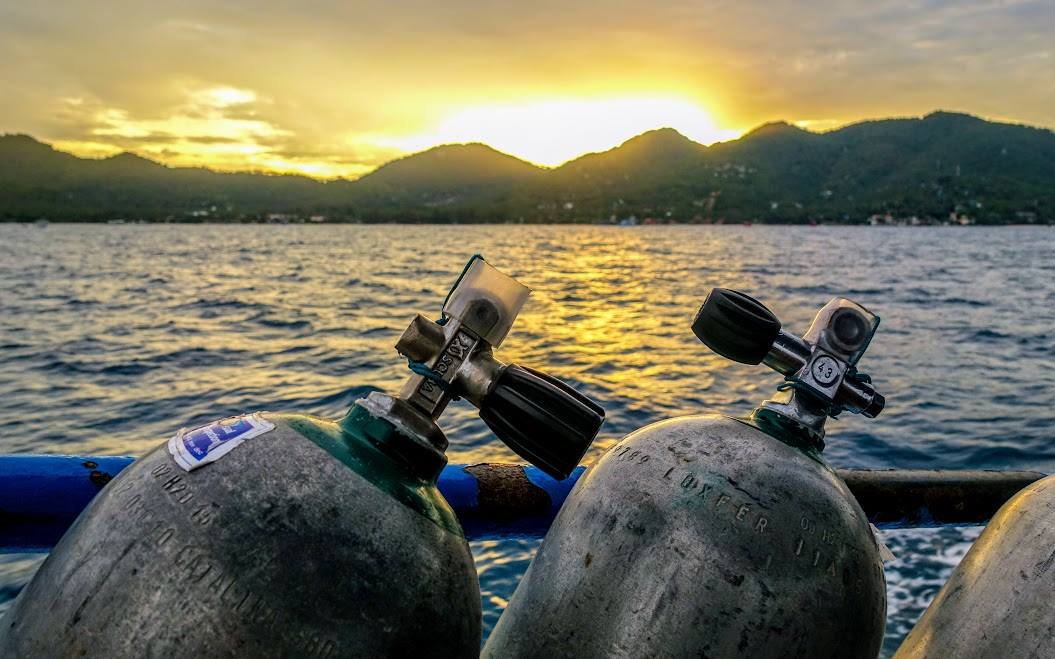
We then go through some drills. How to retrieve your regulator if it comes out of your mouth, how to get water out of your mask (don’t you dare call them goggles, you will owe John a drink every time you do!), how to start getting your buoyancy under control.
Buoyancy, something I probably had never thought of before going scuba diving, is probably the biggest skill necessary, after learning how to breathe. In layman’s terms, controlling your buoyancy is being able to control the depth at which you are swimming. This is important for a few reasons, notably so that you don’t end up crashing into the coral, and also so that you don’t end up going deeper than you are supposed to.
So we get these skills done, and let me tell you we are starting to get really excited to go into the ocean! But, one step at a time. Class is over for the day, so back to the bar to take in the beautiful sunset, grab a drink with the group, and to talk about our day. John tells the 4 of us that we are progressing nicely and that once again, we have homework to do…
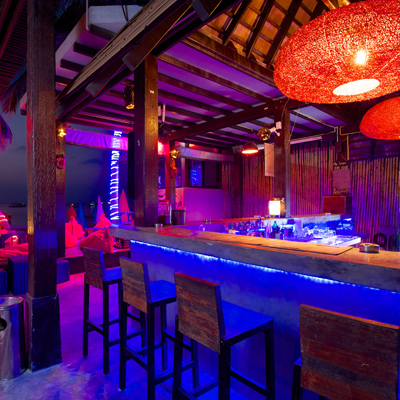
The good news is, this was the last of our homework, and the next morning we meet for breakfast and go over any last-minute questions we have before the practical exam. Well, all of this studying paid off because between us, we scored 100% and 98%, but I won’t say who scored which! You can leave your guesses in the comments! 😉
Finally scuba diving in the open water
With the practical exam under our belts, it was now time to do what we came to do. Back at Roctopus, we load up the pickup truck with our gear, and we head out to the pier. A group of maybe 20 students and 5 instructors jumped onto our boat and out we went into the great big blue.

While we headed out to our scuba spot, Carine and I are now freaking out that we are about to do this for real. Carine was actually more nervous than I was, and more nervous than I would have thought she would have been. This was all her idea after all!
We get to our dive spot, get our gear ready, finish up our BRAID pre-dive check, and here we go! We jump in and gather together at the surface for one last talk before we head in. Everyone ready, we grab the rope that anchors the boat, and we start our descent.
Maybe I never thought of how you descended before, maybe I thought you just swim downwards (if that even makes any sense), but let me tell you, that is not how you do it… To descend, you actually just exhale, a lot. As you exhale, your buoyancy decreases, and you start going deeper and deeper into the ocean.

After descending to about 10 meters, we just take a moment to take in what is happening. We are 10 meters below the ocean with a tank strapped to our backs, but at least we have each other to keep ourselves calm, and still feel like we are somewhat in control.
We had seen coral reefs before, while we were in Australia on the Great Barrier Reef, but this was something else. The fish, wow! I mean there were schools of barracuda swimming within throwing distance of us. And I’m talking thousands, too many to count. What a scene!
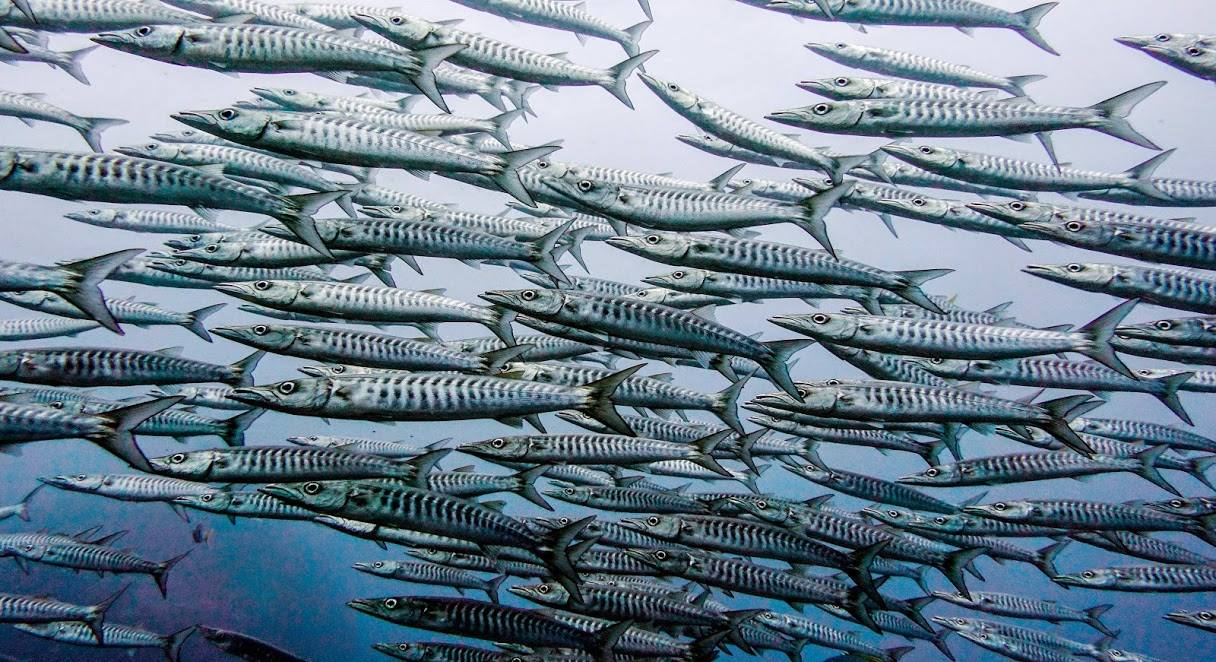
A large part of our first and second dives on that day consisted of skills training, similar to what we had practiced in the pool. Taking your regulator out and fishing for your second one is a lot more nerve-wracking when you’re out in the ocean though!
We did still get to just swim around in formation with our team and take in the beauty of the ocean around us.

And just like that, it was over. We do a quick safety stop, 5 meters from the surface, something the body needs in order to flush the extra nitrogen out of your body, and then we break the surface and just float around for a few minutes.
“Babe, what did you think? It was so cool”, Carine says. I agree. That was like no other experience I have ever had. The greatest part for me, I’ll get back to that!
So back to the boat, and back to the bar (notice that there is a reoccurring theme here). We debrief with John and our Swedes, and guess what, we are freaking great scuba divers! Well, at least as so far as you can say for two people that have been in the water for a combined 60 minutes at least, but it’s a good start!
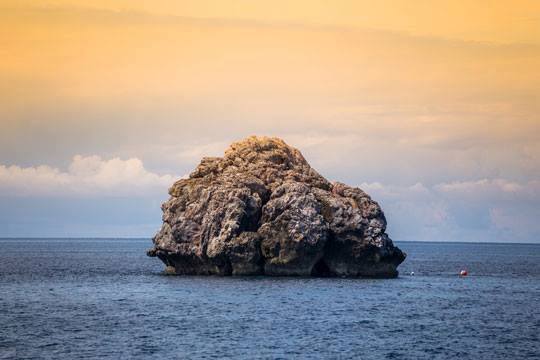
Scuba diving at Sail Rock
Now I should go back a bit here. Koh Tao has a special dive site called Sail Rock. It’s special for a few reasons. For one, it’s beautiful. Two, it is a trek to get there, you have to leave well before sunrise to get there before it starts getting packed with other dive schools. And three, this is where people see whale sharks…
So, when we were given the option to do dives 3 and 4 at Sail Rock (albeit at a cost) we jumped on the opportunity because of, well… whale sharks! Hopefully.
On day 4 of our open water certification training, in the wee hours of the morning, maybe around 4 am, we set out from our hostel towards Roctopus. Man oh man, we are not morning people! We would much rather stay up until 4 am than get up at that time. But it was a little easier this time, given what we had in store for us that day.
So once again, we pack our gear into the pickup truck, get to the pier, and get on the boat. This time, we’re in for a good hour and a half before we get to Sail Rock. One of the perks though was the beautiful sunrise we got to watch off the top of the boat while having our breakfast. So peaceful so beautiful. A perfect beginning to the day.
What was great about our second day in the ocean, was that our skills were mostly completed. Today, all we needed to do was to swim around and take in the beautiful corals and fish near Sail Rock.
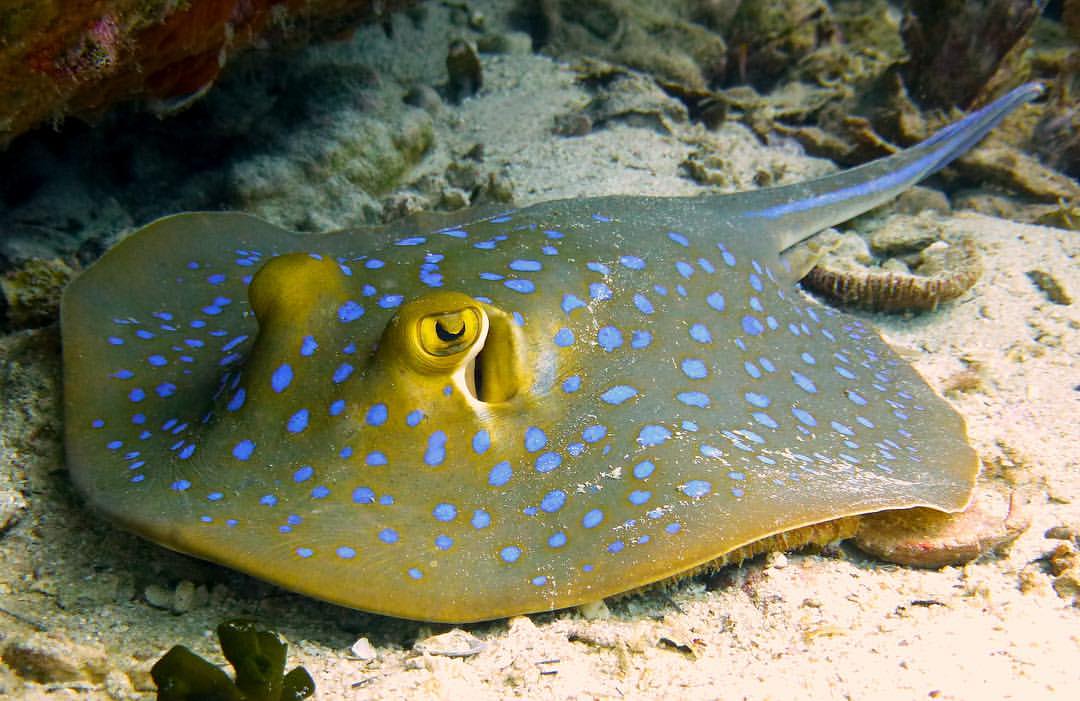
I’m sure you have heard of coral bleaching, and what a big problem it is. We did see that while on the Great Barrier Reef. Luckily on our scuba diving experiences in Thailand, we did not see any bleaching, which was encouraging.
And the fish?! Oh man! Did we ever see a lot of fish and so many different species. We saw: a huge school of trevally, pick handle barracudas, parrotfish, angelfish, remora swimming around my leg like I was a shark, butterflyfish, bannerfish, triggerfish, grouper, etc. Now, I didn’t know what any of these were before, but they sure were awesome!

After the first dive of the day, we all had a nice lunch together on the boat. As a side note, it was the first time I ever had massaman curry. What was wrong with me, never having it before? So delicious!
Our chance encounter with a gentle giant in Koh Tao
At this point, there were a few people still in the water, just snorkeling, while the majority of us were chilling on the boat, waiting for our last dive.
WHALE SHARK!!!!! Everyone grab a mask and jump in the water!
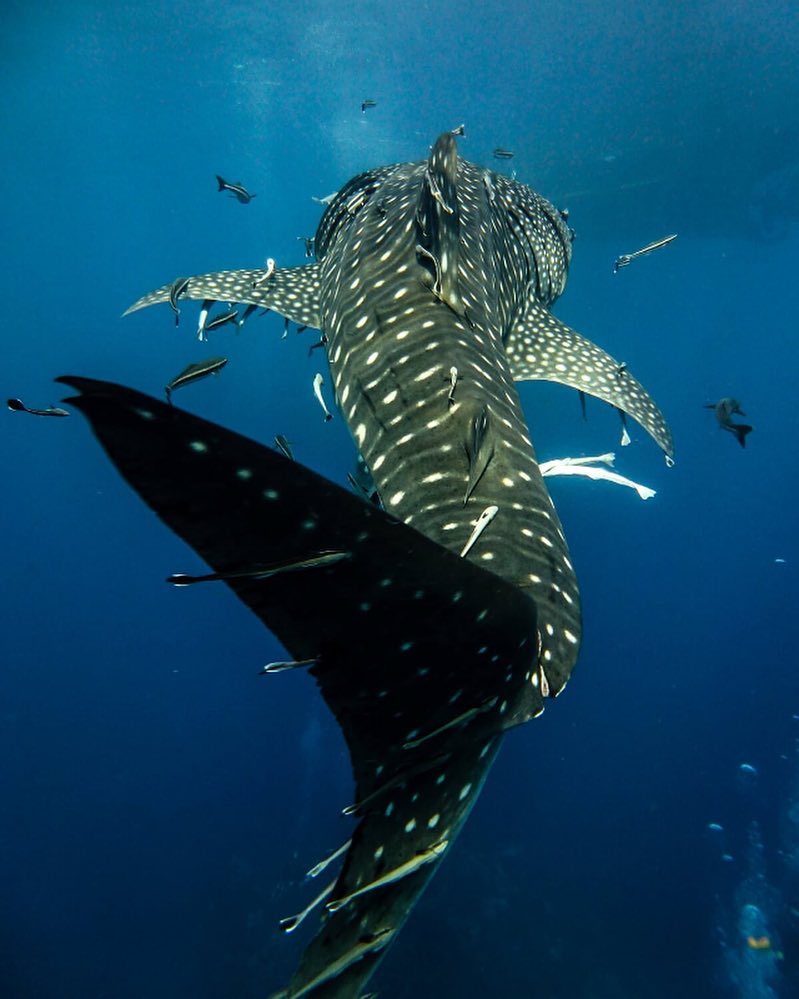
You don’t have to tell me twice!
We grab a mask and jump overboard. We look under the water, and there it is. A baby whale shark, maybe 3 meters in length, was swimming away from us.
But we knew better than to despair that we missed our chance. John had told us that whale sharks usually swim in figure 8 patterns, meaning if they are swimming away, they will most likely double back. And this time was no different.

I saw it turn around, and this time it was coming straight at me! I am a big guy, almost 2 meters tall, but this creature, it was just so big, so powerful looking, but also so serene and calm. At no point was I ever nervous, I was seriously just so thrilled that I was seeing a whale shark, because how many people can say that they have?
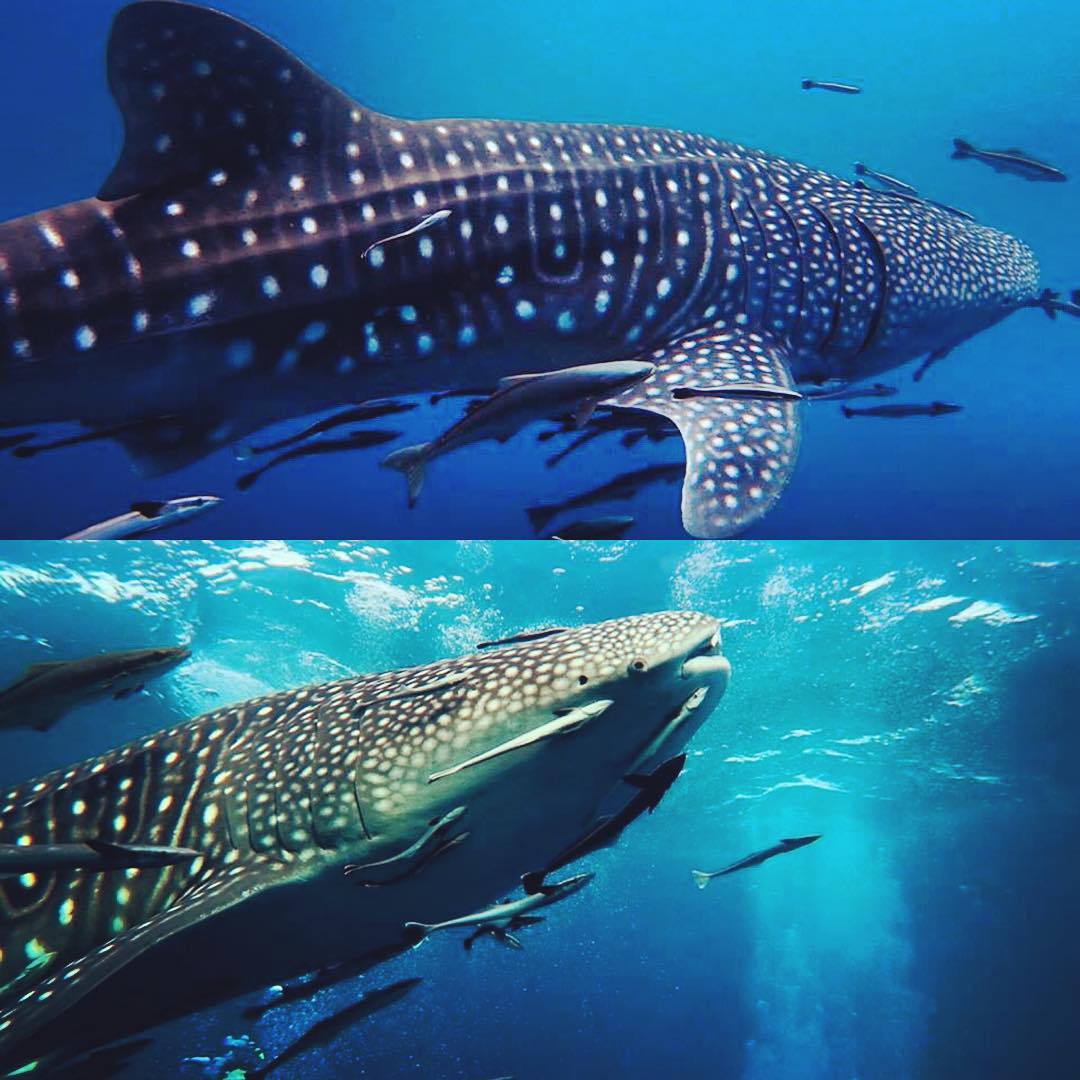
After this whole ordeal, we still had our fourth dive to complete. It was probably the “easiest” of our 4 dives, in the sense that we both felt very comfortable, performed the skills we needed to flawlessly, and were just great underwater buddies.
The best part about scuba diving in Koh Tao, Thailand
That’s another cool thing about scuba diving – you always dive with a buddy. So Carine is now not only my best friend, my wife, and my tag team partner, but she’s now my scuba diving buddy too! We worked great together! Communicating underwater is also something I hadn’t given much thought to before doing it. It is a lot of sign language, most of it taught to us beforehand, but sometimes made up on the spur of the moment, and often hilarious! I wish I could show you how I tried to signal her that I saw a parrotfish… hilarious. Basically, I was flapping my arms around like a bird… not great for oxygen consumption!
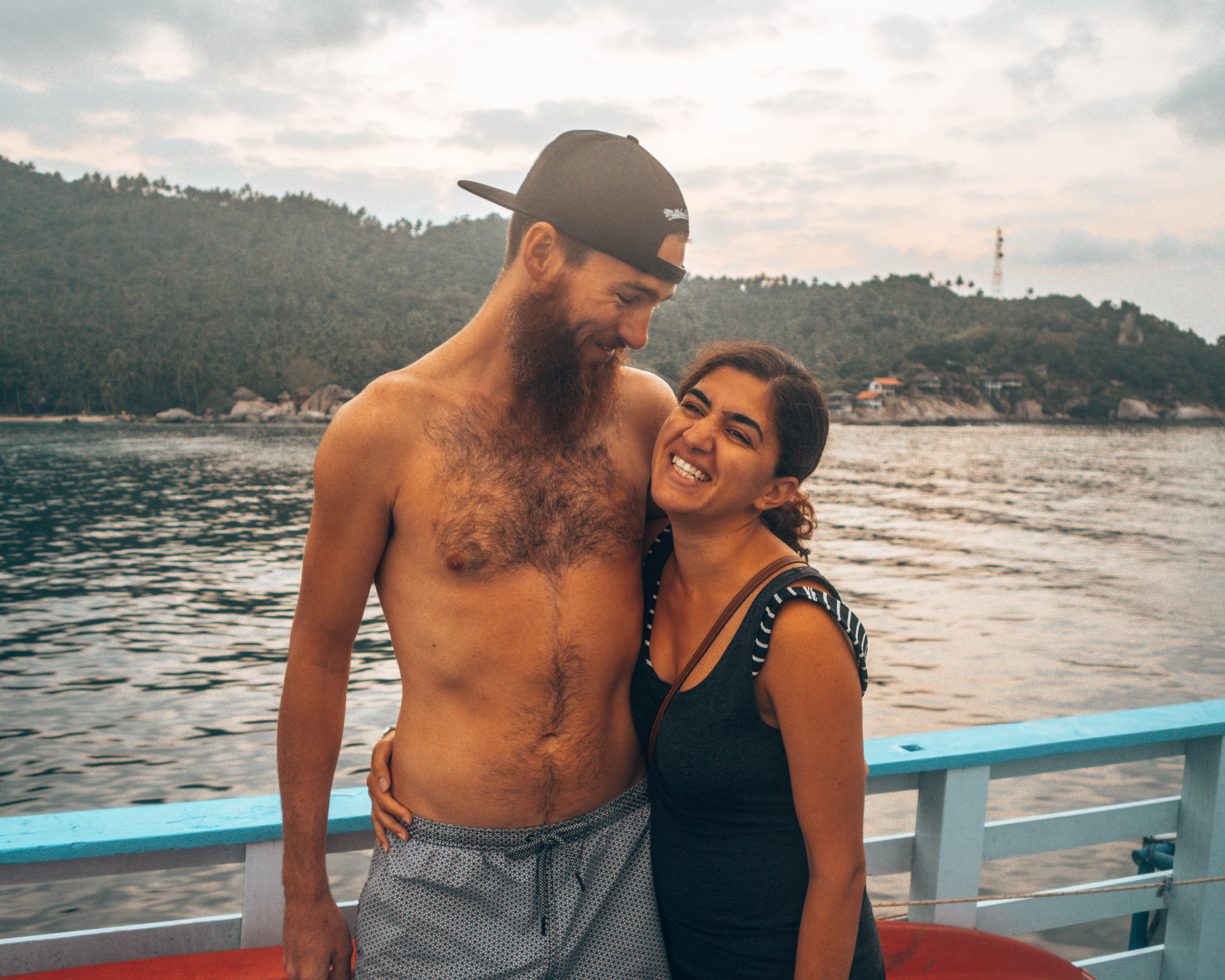
Our last dive over, it was with great pleasure that John announced to us that we’re now certified open water divers! It was hard work, a lot of studying and understanding new concepts, performing tasks that 72 hours earlier were foreign to us, but we did it. And with distinction too, if I may add. John told us (and he swears he doesn’t say this to everyone), that we (along with our friends Ernst and Carl) were the best team he had dived with in a long time.
What was the best thing about scuba diving? For me, it was the sense that nothing else matters at that moment, other than breathing, checking your air supply and depth, checking for your buddy (these are the 3 things you have to do every 10 seconds) and of course take in the beauty of the ocean. I have never felt so disconnected from any problems I might have, or stresses nagging at me at that moment. All that matters underwater is that you are scuba diving.
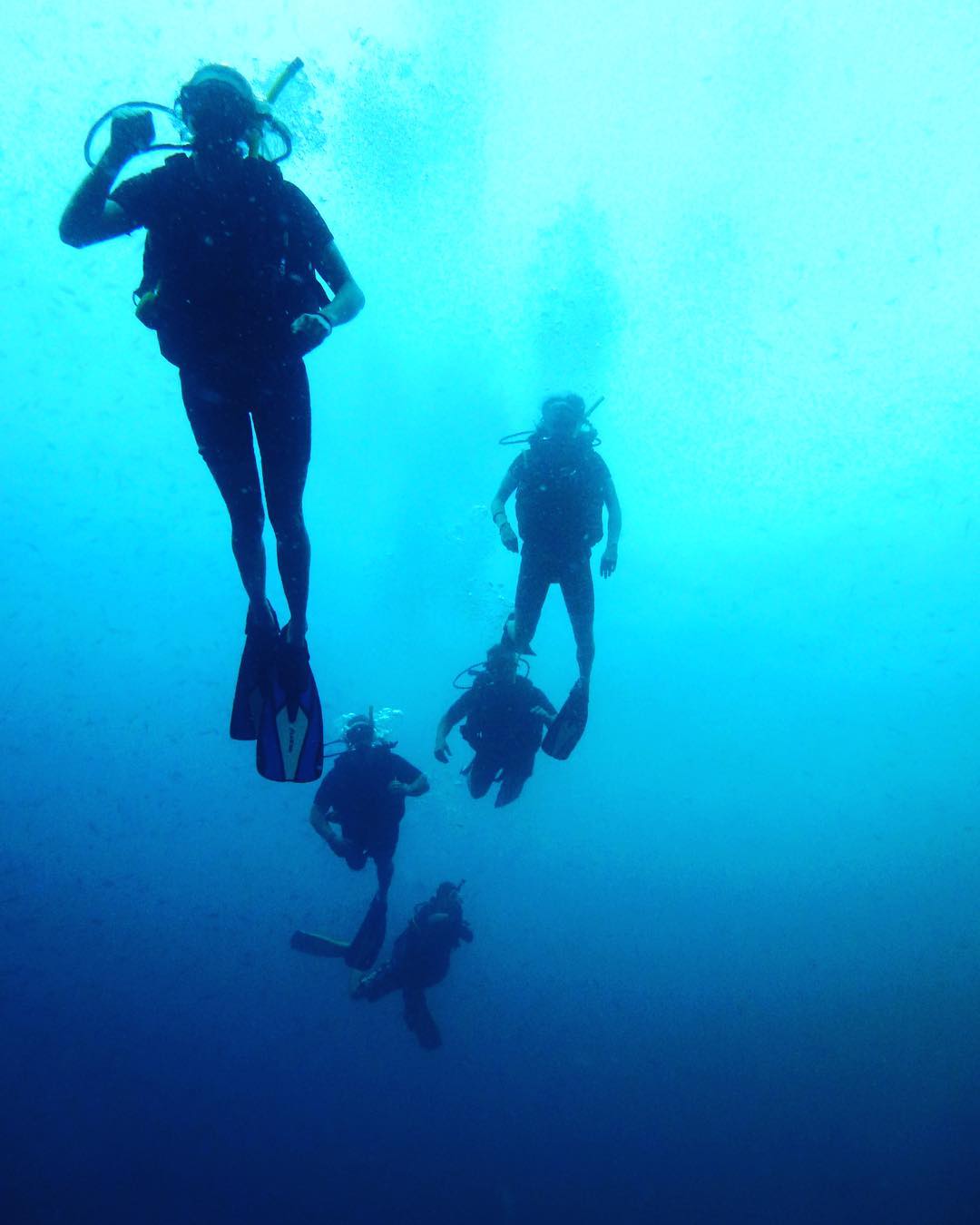
As for our team of John, Carl, and Ernst, we couldn’t have had a better time with anyone else! Laughs, buckets, great times underwater and above it, we will never forget the wanker from the UK and our two cute Swedes – friends for life!
Our next stop is going to be the Philippines, which is exciting because we have been waiting to go diving again. And from what we hear, it’s one of the best places to go diving.
Until our next underwater adventures!
We put a lot of time and effort into the content we create. Please like, comment and share, every action on your part helps us out tremendously and is very much appreciated.
You can also help us by pinning it for others to find.
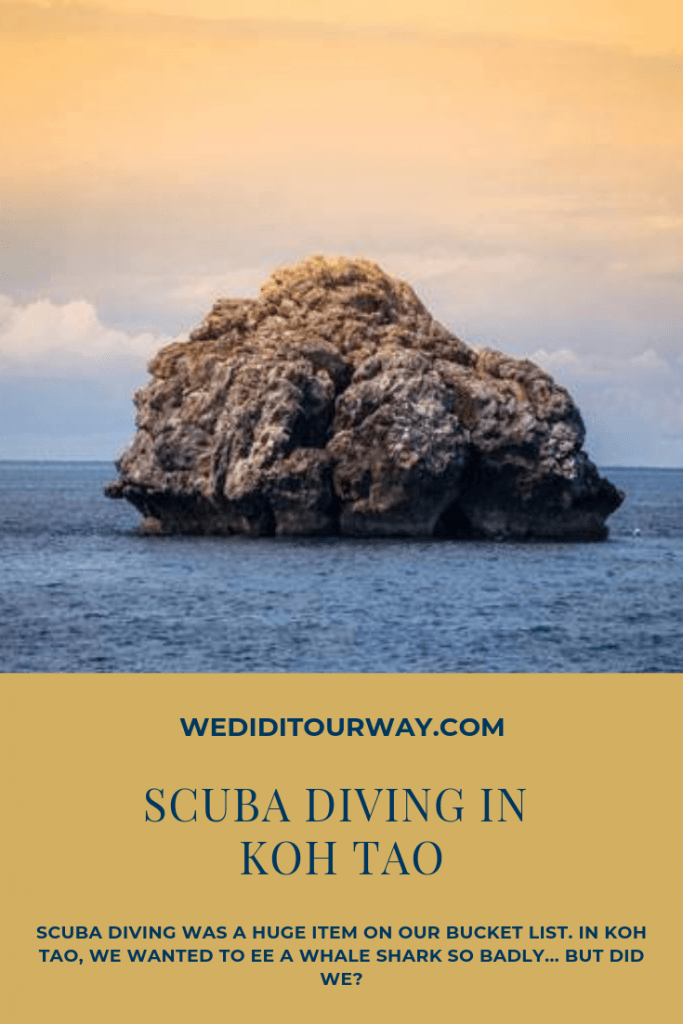
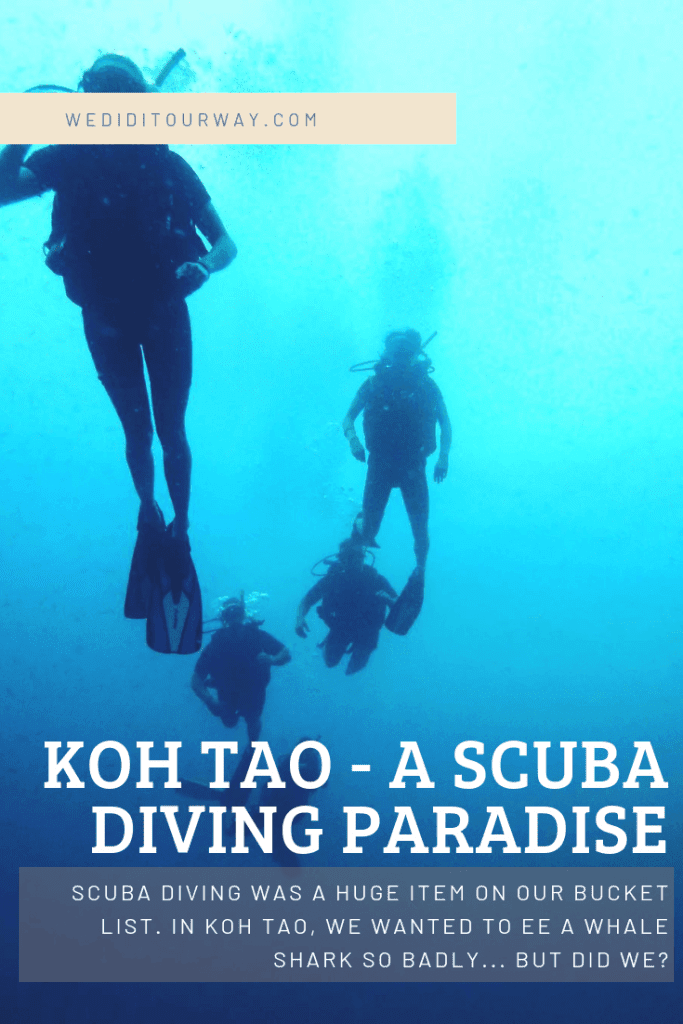
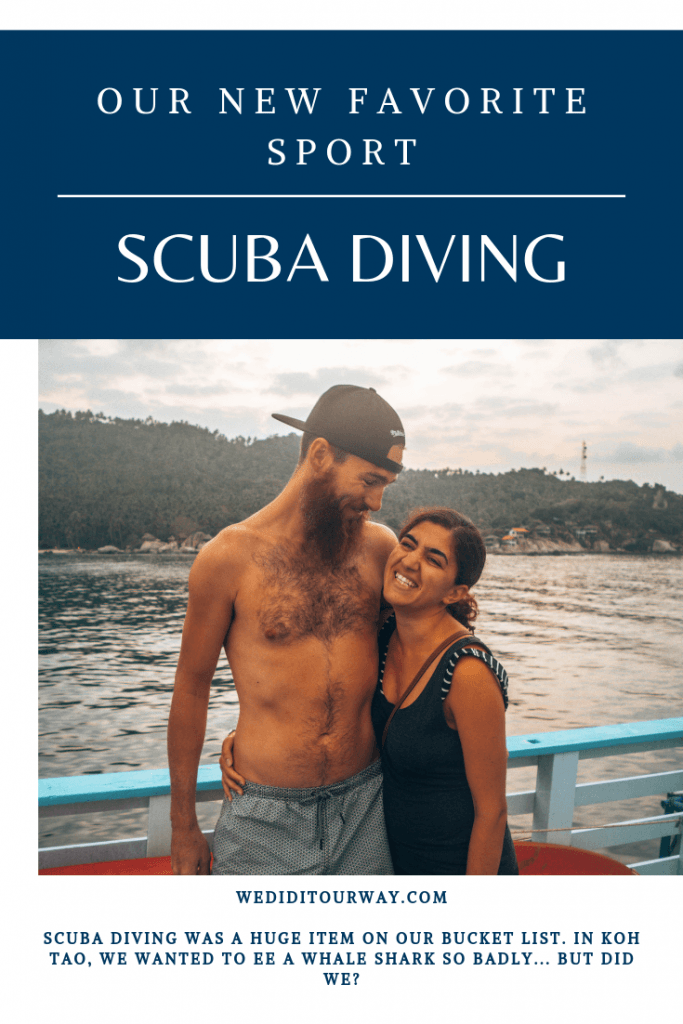
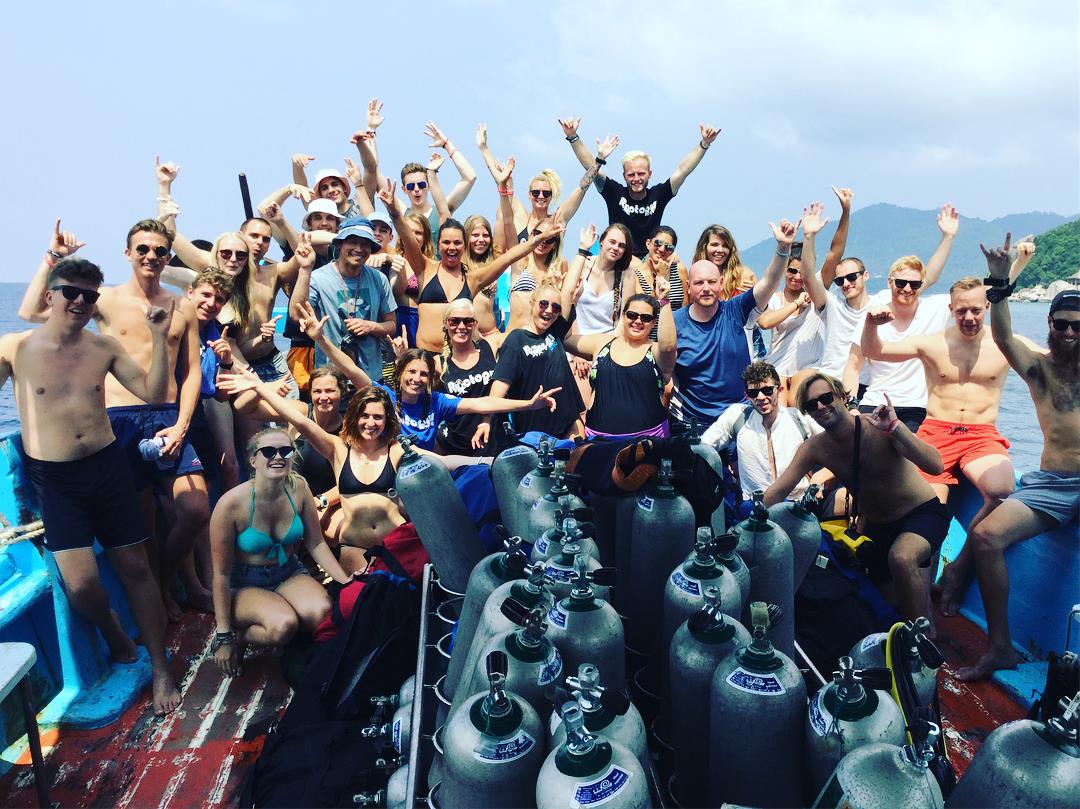
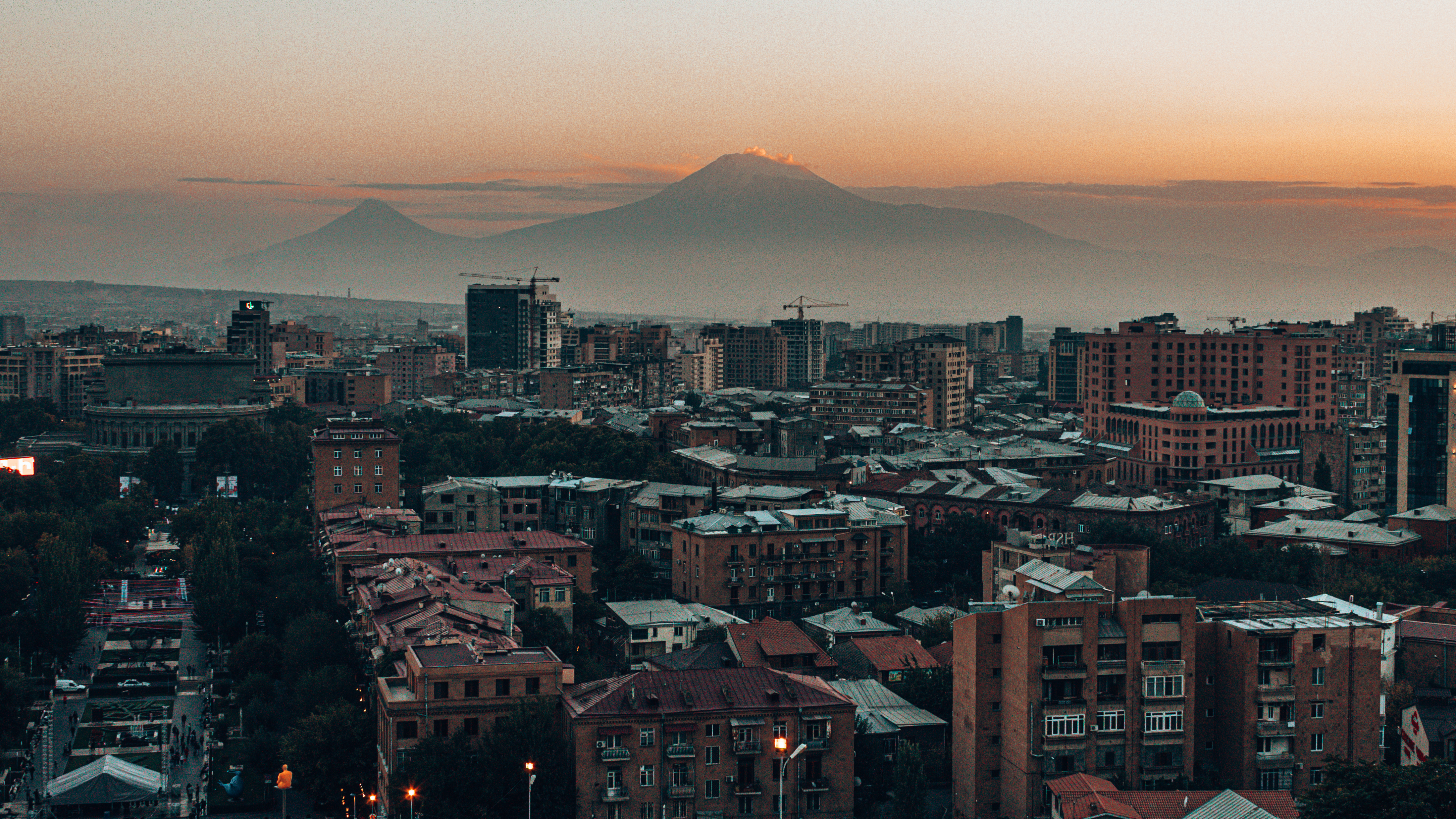
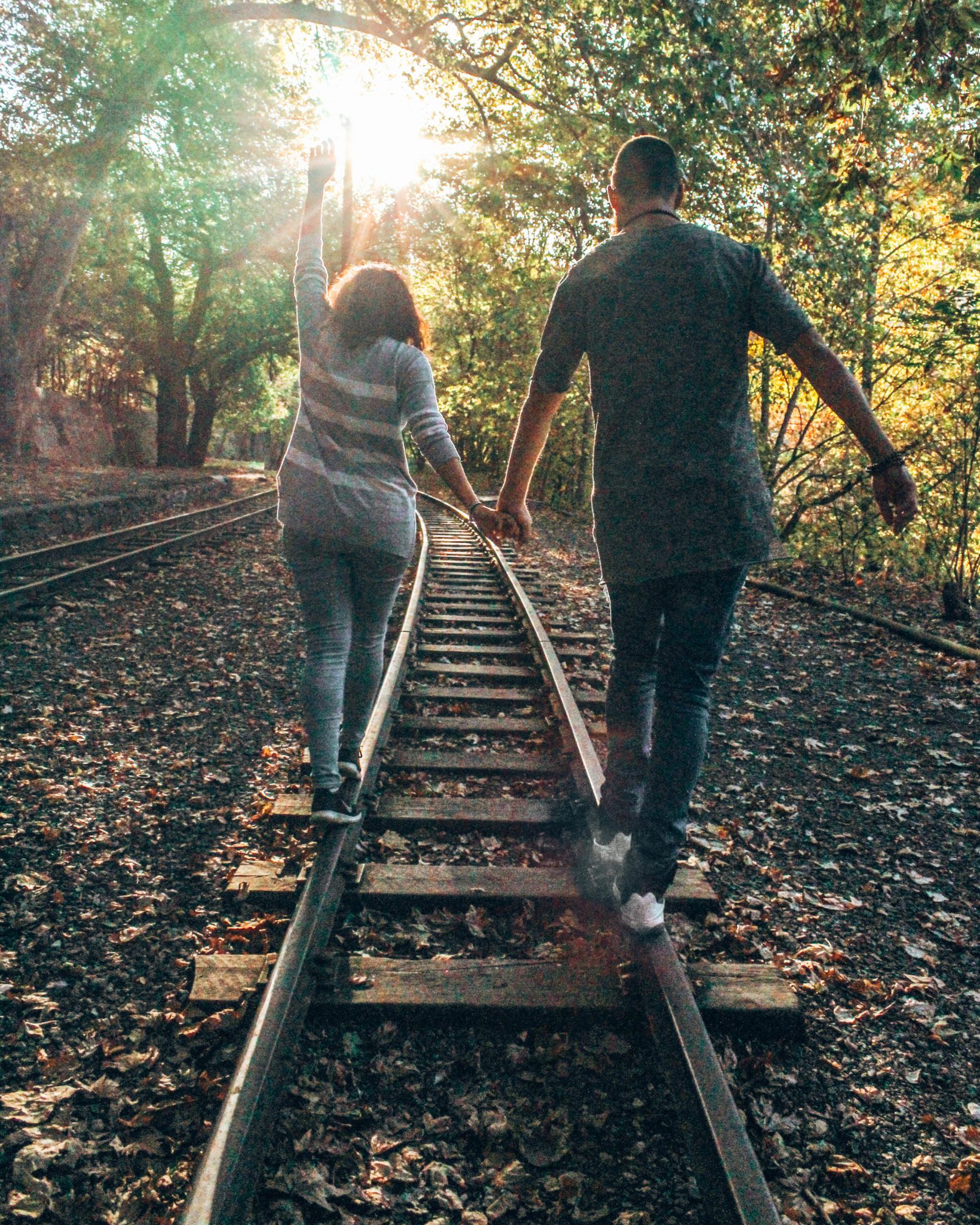

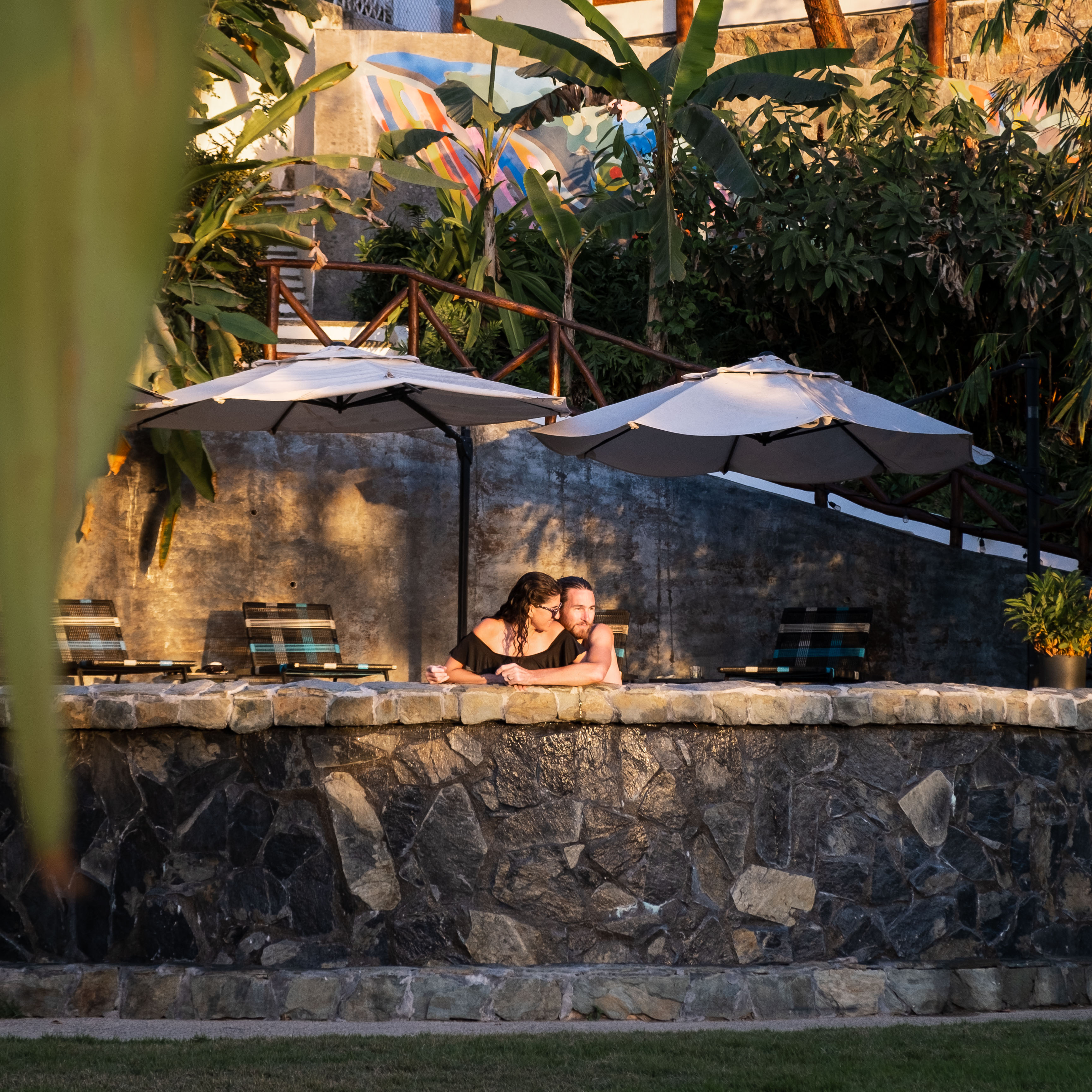


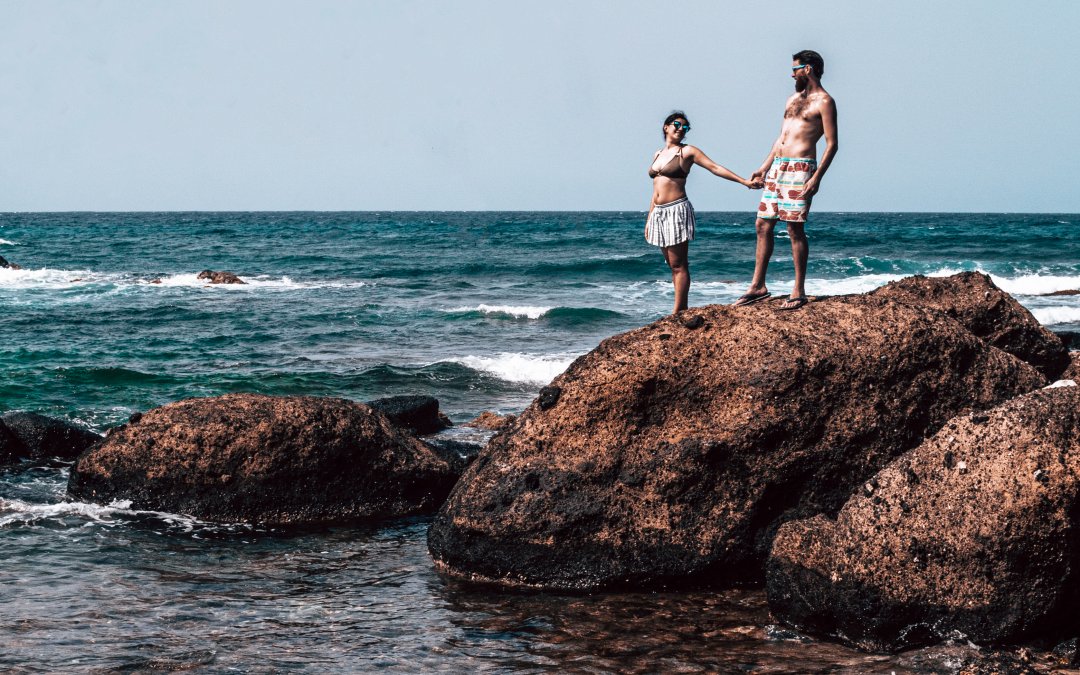
0 Comments
Trackbacks/Pingbacks